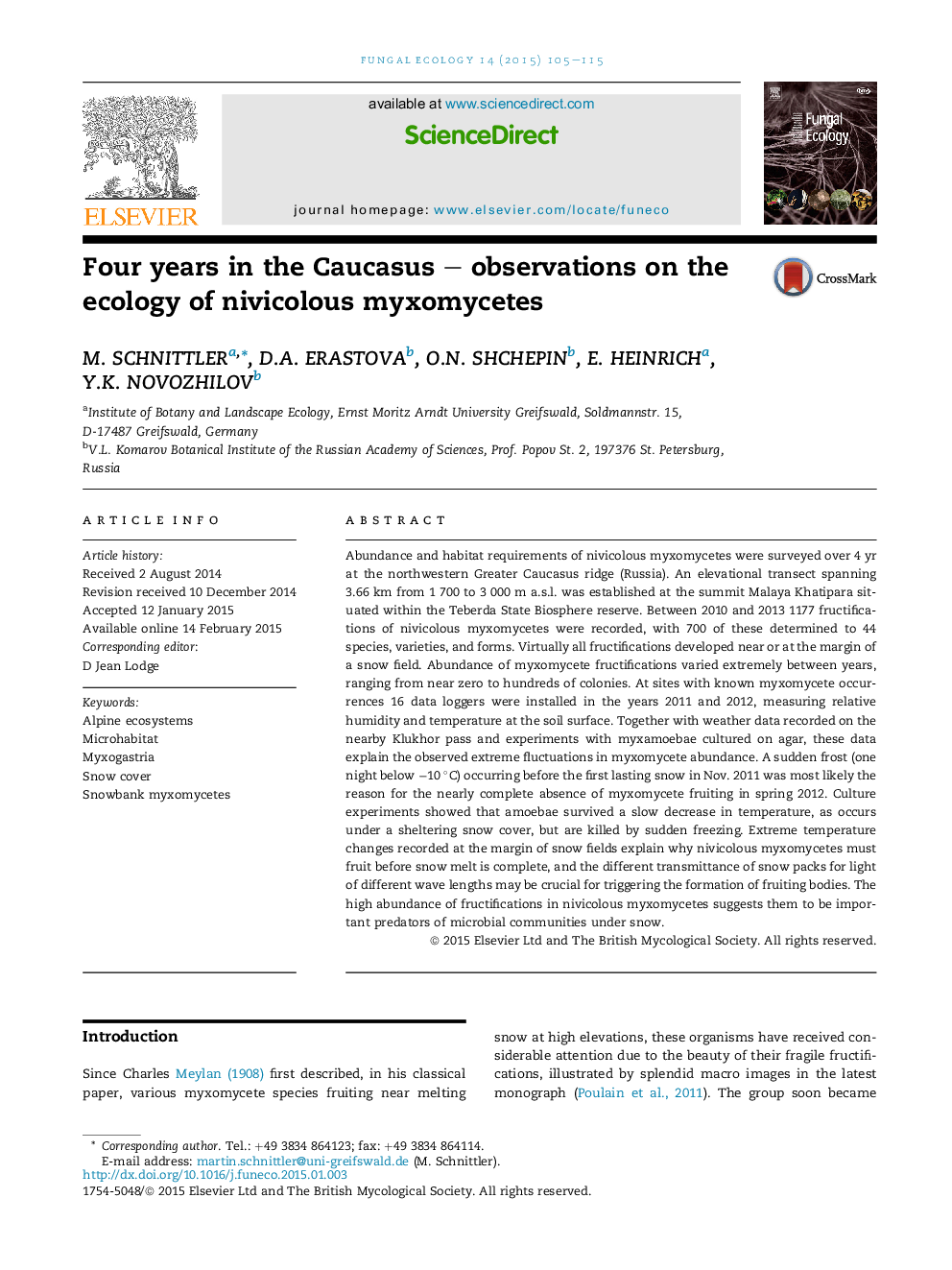| کد مقاله | کد نشریه | سال انتشار | مقاله انگلیسی | نسخه تمام متن |
|---|---|---|---|---|
| 8384588 | 1543650 | 2015 | 11 صفحه PDF | دانلود رایگان |
عنوان انگلیسی مقاله ISI
Four years in the Caucasus - observations on the ecology of nivicolous myxomycetes
دانلود مقاله + سفارش ترجمه
دانلود مقاله ISI انگلیسی
رایگان برای ایرانیان
موضوعات مرتبط
علوم زیستی و بیوفناوری
علوم کشاورزی و بیولوژیک
بوم شناسی، تکامل، رفتار و سامانه شناسی
پیش نمایش صفحه اول مقاله

چکیده انگلیسی
Abundance and habitat requirements of nivicolous myxomycetes were surveyed over 4 yr at the northwestern Greater Caucasus ridge (Russia). An elevational transect spanning 3.66 km from 1 700 to 3 000 m a.s.l. was established at the summit Malaya Khatipara situated within the Teberda State Biosphere reserve. Between 2010 and 2013 1177 fructifications of nivicolous myxomycetes were recorded, with 700 of these determined to 44 species, varieties, and forms. Virtually all fructifications developed near or at the margin of a snow field. Abundance of myxomycete fructifications varied extremely between years, ranging from near zero to hundreds of colonies. At sites with known myxomycete occurrences 16 data loggers were installed in the years 2011 and 2012, measuring relative humidity and temperature at the soil surface. Together with weather data recorded on the nearby Klukhor pass and experiments with myxamoebae cultured on agar, these data explain the observed extreme fluctuations in myxomycete abundance. A sudden frost (one night below â10 °C) occurring before the first lasting snow in Nov. 2011 was most likely the reason for the nearly complete absence of myxomycete fruiting in spring 2012. Culture experiments showed that amoebae survived a slow decrease in temperature, as occurs under a sheltering snow cover, but are killed by sudden freezing. Extreme temperature changes recorded at the margin of snow fields explain why nivicolous myxomycetes must fruit before snow melt is complete, and the different transmittance of snow packs for light of different wave lengths may be crucial for triggering the formation of fruiting bodies. The high abundance of fructifications in nivicolous myxomycetes suggests them to be important predators of microbial communities under snow.
ناشر
Database: Elsevier - ScienceDirect (ساینس دایرکت)
Journal: Fungal Ecology - Volume 14, April 2015, Pages 105-115
Journal: Fungal Ecology - Volume 14, April 2015, Pages 105-115
نویسندگان
M. Schnittler, D.A. Erastova, O.N. Shchepin, E. Heinrich, Y.K. Novozhilov,